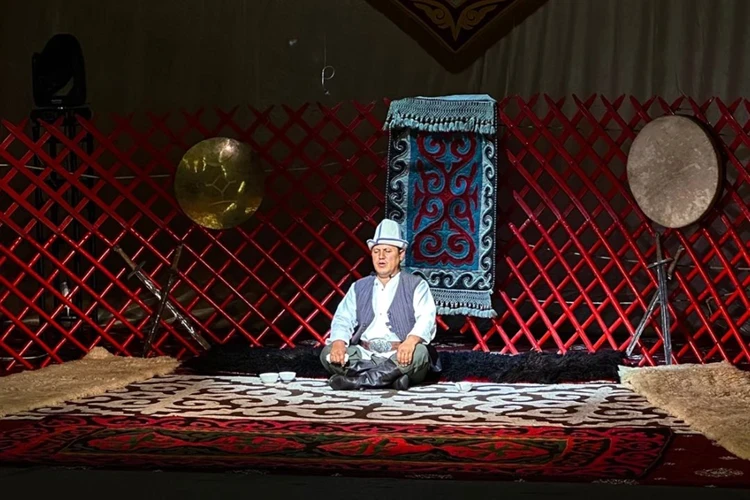Kenje Kara
In 1903, a small excerpt of 270 lines from the epic "Semetei" (the second part of the trilogy "Manas") was recorded on a phonograph by the Russian artist B.V. Smirnov (1881—1954). As a student at the St. Petersburg Academy of Arts, he had the opportunity to participate as an artist in a comprehensive expedition organized by the Russian Geographical Society to Central Asia. During this time, he listened to and discreetly recorded an excerpt performed by the well-known singer-musician Kenje-Kara ырычы in Pishpek. In this brief stay, the artist managed to create more than twenty sketches and studies from life, mainly of an ethnographic nature, which formed a complete artistic album titled "In Kyrgyzstan. 1903." Among the drawings, the depiction of Kenje-Kara stands out, which is the first known image of the epic performer from the pre-revolutionary period. B.V. Smirnov included his essays with reproductions of some drawings and a prose narrative from the epic "Semetei," recorded from the mouth of Kenje-Kara, in his book "In the Steppes of Turkestan." This excerpt describes how Manas's son — Semetei was searching for a bride. In the end, he meets Aichurek and
marries her.
The 1903 recording of Semetei from Kenje Kara was made on wax cylinders.















































